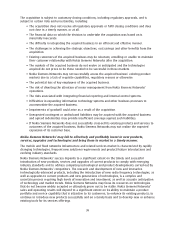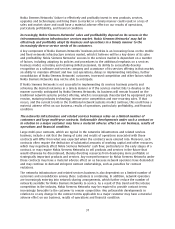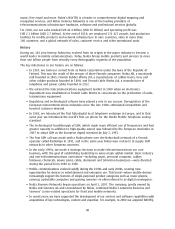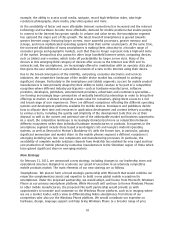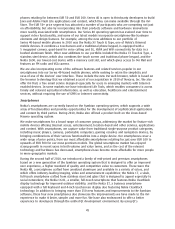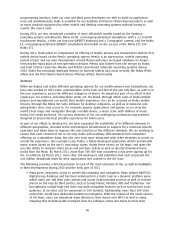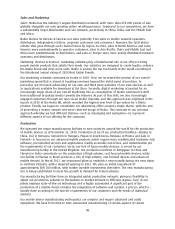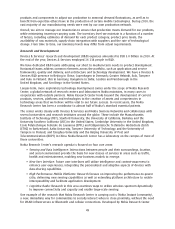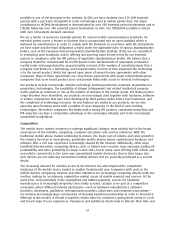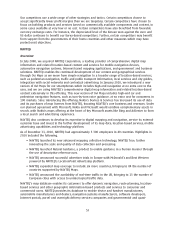Nokia 2010 Annual Report Download - page 45
Download and view the complete annual report
Please find page 45 of the 2010 Nokia annual report below. You can navigate through the pages in the report by either clicking on the pages listed below, or by using the keyword search tool below to find specific information within the annual report.points, market segments and geographies. We and Microsoft would closely collaborate on joint
marketing initiatives and a shared development roadmap to align on the future evolution of mobile
products. The goal for both partners is that by combining our complementary assets in search, maps,
locationbased services, ecommerce, social networking, entertainment, unified communications and
advertising, we would jointly create an entirely new consumer proposition. We would also combine
our developer ecosystem activities to accelerate developer support for the Windows Phone platform
on Nokia devices.
We expect the transition to Windows Phone as our primary smartphone platform to take about two
years. While we transition to Windows Phone as our primary smartphone platform, we will continue
to leverage our investment in Symbian for the benefit of Nokia, our customers and consumers, as well
as developers. We and Microsoft have entered into a nonbinding term sheet, and the proposed
Microsoft partnership remains subject to the negotiation and execution of definitive agreements.
Mobile phones:
In mobile phones, we are renewing our strategy to focus on capturing volume and
value growth by leveraging our innovation and strength in developing growth markets to connect the
next billion people to their first Internet and application experience.
Almost 90% of the world’s population lives within range of a mobile signal, yet there are more than
3 billion people who do not own a mobile device. Of the estimated 3.7 billion people who do own a
mobile device, fewer than half use it to access the Internet, either out of choice or because Internet
connectivity is not available. Nokia recognizes that there is a significant opportunity to bring people
everywhere, affordable mobile products that enable simple and efficient web browsing, as well as
give access to maps and other applications and innovations.
Nextgeneration disruptive technologies:
Under our new strategy, MeeGo becomes an opensource,
mobile operating system project. MeeGo will place increased emphasis on longerterm market
exploration of nextgeneration devices, platforms and user experiences.
Our new strategy is supported by changes in Nokia’s leadership, operational structure and approach
designed to focus on speed, results and accountability. See Item 4A. “History and Development of the
Company—Organizational Structure” and Item 6A. “Directors and Senior Management—Nokia
Leadership Team”.
The following business overview continues to describe our mobile devices business prior to
the announcement of our new strategy and changes in operational structure for our Devices &
Services business, effective April 1, 2011, in order to align with the financial segment
reporting and related operating and financial review discussion through December 31, 2010
contained in this annual report.
Mobile Phones
We produce a range of affordable mobile phones based on the Series 30 and Series 40 operating
systems. Our Series 30 operating system powers our most costeffective voice and messaging phones.
These products have voice capability, basic messaging and calendar features, and, increasingly, color
displays, radios, basic cameras and Bluetooth functionality. They are targeted at consumers for whom
a low total cost of ownership is most important and all of our Series 30 models retail for less than
EUR 50. Series 30based mobile phones do not provide Internet connectivity, access to Ovi or offer
opportunities for application development by third parties. New additions to our portfolio of
Series 30based mobile phones in 2010 included the Nokia 1616, equipped with a longlasting anti
dust keypad, FM radio, a flashlight, and a display that makes viewing information on the small screen
easier.
Our Series 40 operating system powers the majority of our mobile phone models and supports more
functionalities and applications, such as Internet connectivity and access to our services. These
devices, often called feature phones, are targeted at consumers for whom a balance between cost of
ownership, functionality and style is most important, with many of our Series 40based mobile
44




